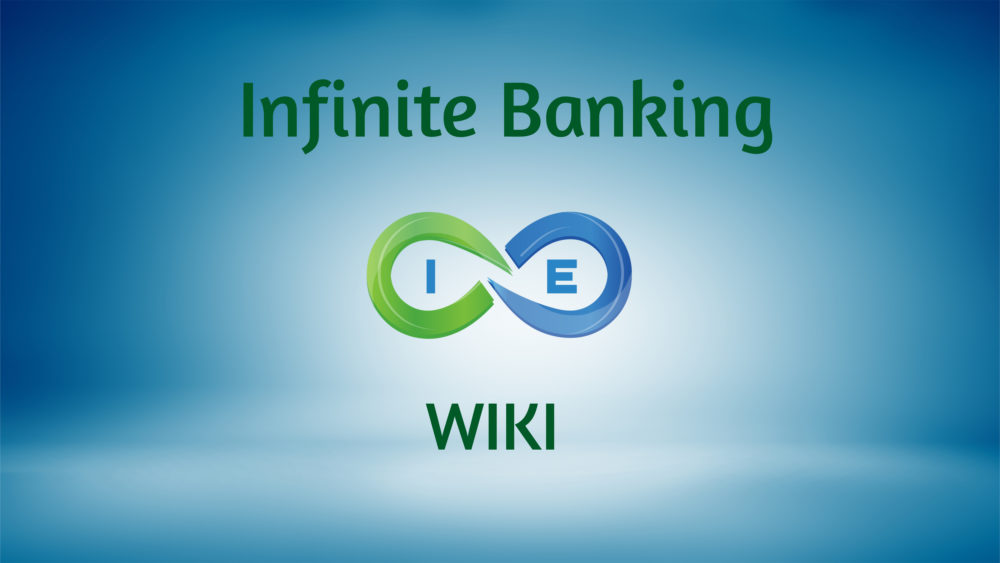All Categories
Featured
Table of Contents
Okay, to be reasonable you're truly "financial with an insurance company" instead than "banking on yourself", yet that principle is not as simple to market. It's a little bit like the idea of buying a residence with cash, after that borrowing against the home and placing the money to function in an additional investment.
Some individuals like to talk regarding the "rate of money", which essentially means the very same point. That does not suggest there is absolutely nothing beneficial to this idea once you obtain past the advertising.
The whole life insurance policy industry is tormented by overly expensive insurance coverage, large commissions, dubious sales techniques, low rates of return, and improperly educated customers and salesmen. Yet if you intend to "Rely on Yourself", you're mosting likely to have to wade right into this industry and actually buy entire life insurance. There is no alternative.
The assurances intrinsic in this product are crucial to its function. You can borrow versus the majority of kinds of money value life insurance policy, but you shouldn't "bank" with them. As you buy a whole life insurance policy plan to "financial institution" with, bear in mind that this is an entirely separate area of your economic plan from the life insurance policy area.
Buy a big fat term life insurance policy policy to do that. As you will certainly see below, your "Infinite Banking" policy really is not mosting likely to dependably offer this vital economic feature. Another issue with the truth that IB/BOY/LEAP counts, at its core, on a whole life policy is that it can make purchasing a policy problematic for numerous of those curious about doing so.
Infinite Banking Insurance
Hazardous hobbies such as SCUBA diving, rock climbing, sky diving, or flying also do not blend well with life insurance coverage products. The IB/BOY/LEAP supporters (salesmen?) have a workaround for youbuy the policy on somebody else! That might function out great, given that the point of the policy is not the survivor benefit, yet bear in mind that purchasing a plan on small youngsters is a lot more expensive than it needs to be considering that they are usually underwritten at a "typical" rate instead than a chosen one.

Most plans are structured to do one of 2 points. The payment on an entire life insurance coverage policy is 50-110% of the first year's costs. Often plans are structured to make best use of the fatality benefit for the costs paid.
With an IB/BOY/LEAP plan, your goal is not to make best use of the survivor benefit per dollar in costs paid. Your objective is to make the most of the cash worth per dollar in costs paid. The price of return on the plan is very important. One of the most effective methods to make best use of that aspect is to get as much money as possible into the policy.
The very best method to improve the rate of return of a plan is to have a fairly small "base policy", and afterwards placed more cash money right into it with "paid-up enhancements". Rather than asking "Exactly how little can I put in to obtain a specific survivor benefit?" the concern becomes "Just how much can I legally took into the policy?" With more money in the policy, there is even more money worth left after the expenses of the fatality benefit are paid.
A fringe benefit of a paid-up addition over a normal premium is that the commission price is lower (like 3-4% instead of 50-110%) on paid-up enhancements than the base policy. The less you pay in commission, the higher your rate of return. The price of return on your money value is still going to be negative for some time, like all cash value insurance coverage.
Most insurance coverage business only offer "direct acknowledgment" loans. With a direct acknowledgment loan, if you borrow out $50K, the returns rate used to the cash money worth each year just applies to the $150K left in the plan.
Royal Bank Avion Infinite
With a non-direct recognition lending, the business still pays the same returns, whether you have actually "borrowed the cash out" (practically against) the policy or not. Crazy, right? Why would certainly they do that? Who understands? Yet they do. Typically this feature is coupled with some less helpful aspect of the plan, such as a reduced returns price than you could get from a policy with direct recognition financings (cash flow banking).
The business do not have a resource of magic complimentary cash, so what they give up one location in the policy should be extracted from an additional place. However if it is extracted from a feature you care less around and take into an attribute you care more about, that is an advantage for you.
There is one more vital feature, normally called "clean lendings". While it is great to still have returns paid on cash you have actually secured of the plan, you still need to pay passion on that financing. If the dividend rate is 4% and the financing is billing 8%, you're not exactly coming out in advance.
With a laundry finance, your lending rate of interest is the exact same as the dividend rate on the policy. So while you are paying 5% rate of interest on the loan, that rate of interest is entirely balanced out by the 5% returns on the finance. So in that regard, it acts much like you withdrew the cash from a checking account.

5%-5% = 0%-0%. Same exact same. Thus, you are now "financial on yourself." Without all 3 of these elements, this policy merely is not going to function extremely well for IB/BOY/LEAP. The most significant problem with IB/BOY/LEAP is individuals pressing it. Virtually all of them stand to benefit from you purchasing into this idea.
There are several insurance policy agents talking concerning IB/BOY/LEAP as a feature of whole life that are not really selling policies with the essential attributes to do it! The trouble is that those who understand the concept best have a large dispute of passion and normally pump up the benefits of the principle (and the underlying policy).
Cash Flow Banking With Life Insurance
You ought to compare borrowing against your policy to withdrawing money from your interest-bearing account. Go back to the beginning. When you have absolutely nothing. No deposit. No money in financial investments. No cash in cash worth life insurance coverage. You are encountered with a selection. You can place the cash in the financial institution, you can spend it, or you can purchase an IB/BOY/LEAP plan.
It grows as the account pays passion. You pay tax obligations on the passion yearly. When it comes time to acquire the boat, you withdraw the cash and purchase the watercraft. You can conserve some more cash and put it back in the financial account to begin to make passion once more.
When it comes time to get the watercraft, you offer the financial investment and pay tax obligations on your long term capital gains. You can conserve some even more cash and purchase some more investments.
The cash value not made use of to pay for insurance policy and compensations grows over the years at the reward rate without tax obligation drag. It begins with adverse returns, yet with any luck by year 5 or so has actually recovered cost and is growing at the reward price. When you go to acquire the watercraft, you borrow against the plan tax-free.
Infinite Banking Concept Life Insurance
As you pay it back, the cash you paid back begins expanding again at the dividend price. Those all work pretty similarly and you can compare the after-tax prices of return. The 4th option, nevertheless, works very differently. You do not conserve any cash nor get any kind of sort of investment for years.
They run your credit report and provide you a financing. You pay passion on the borrowed money to the bank until the funding is paid off.
Table of Contents
Latest Posts
Infinite Bank Statements
Does Infinite Banking Work
Royal Bank Visa Infinite Avion
More
Latest Posts
Infinite Bank Statements
Does Infinite Banking Work
Royal Bank Visa Infinite Avion